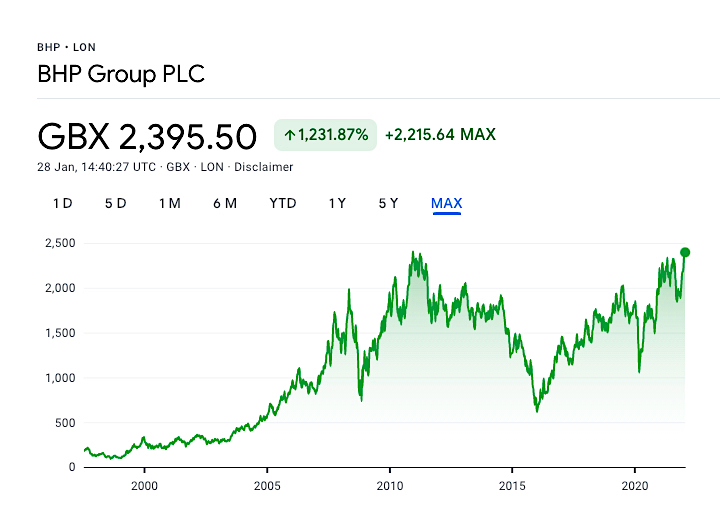It comes ahead of the demerger of its petroleum business with Australian independent Woodside Petroleum (ASX: WPL) that is expected to be completed during April-June.
The delisting will also affect the composition of the FTSE 100 index, which tracks the 100 companies listed on the London Stock Exchange with the highest market capitalization. BHP, with a market capitalization of about 124 billion pounds ($166 billion), was until now the third biggest company on the index, behind Shell and AstraZeneca.
That means index-tracking funds will need to sell BHP in London and buy more of it in Sydney and possibly quickly, brokers said, while active managers who wish to remain overweight will also need to add eventually.
“Everyone’s trying to work out if the market is long or short (Australia-listed) BHP Ltd, come implementation day,” said John Lockton, head of Australian equities at Wilsons Advisory in Sydney told Reuters.
Why now?
When BHP merged with South Africa-based Billiton in 2001, the company adopted a dual listing structure with two separate legal entities. BHP Group Limited, listed on the ASX, and BHP Group Plc, listed on the LSE and Johannesburg Stock Exchange (JSE). Although BHP operated as one economic entity, the assets were split between the two companies and at the time, about 40% of the earnings were attributed to Plc assets.
Twenty years later, Plc’s contribution to the group has dwarfed to less than 5%, partly because of the increasing importance of iron ore in BHP’s portfolio, but also due to a few divestments and the demerger of South32. The company was made up of the assets owned by Billiton at the time of the 2001 merger.

Activist investor Elliott Advisors pushed for BHP to consolidate its listings into one, although it wanted the company to have its primary listing in London. This option was opposed by the Australian government given BHP’s history and economic importance to Australia.
The company is the country’s second-largest iron ore producer, the top hard coking coal exporter and also has copper and nickel assets.
“We are not the same group we were in 2001,” chair Ken Mackenzie said earlier this month, adding that the transaction would cost between $350 million and $450 million to complete. That compares to the more than $1 billion it would have cost in 2017 when Elliott urged BHP to unify.
$41 billion for M&As
Analysts at Morgan Stanley believe the unified BHP could also help the company raise billion in new debt and equity, $41 billion to be precise, if it wanted to boost acquisitions or pay special dividends.
“The combined potential, in our opinion, opens a significant opportunity set for BHP to potentially undertake transformational M&A as and when the right opportunities arise (we note management has not explicitly commented on this),” Morgan Stanley Rahul Anand wrote on a Jan. 27 note.
Shares in London fell as much as 2.3% in London by mid-day and were still trading 1.72% lower at 2,406 pence by mid-afternoon.
BHP will retain secondary listings in London, Johannesburg and New York.




